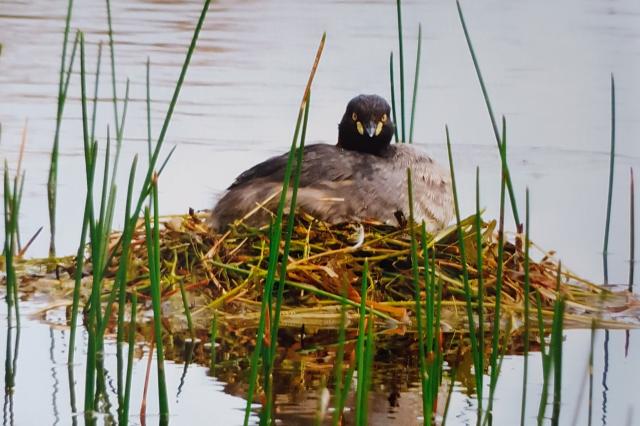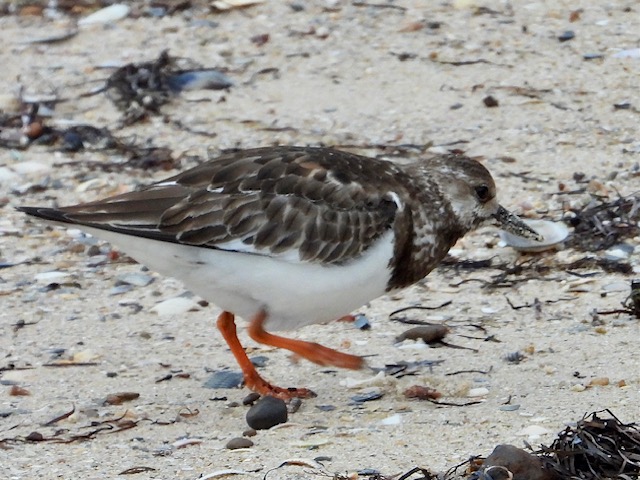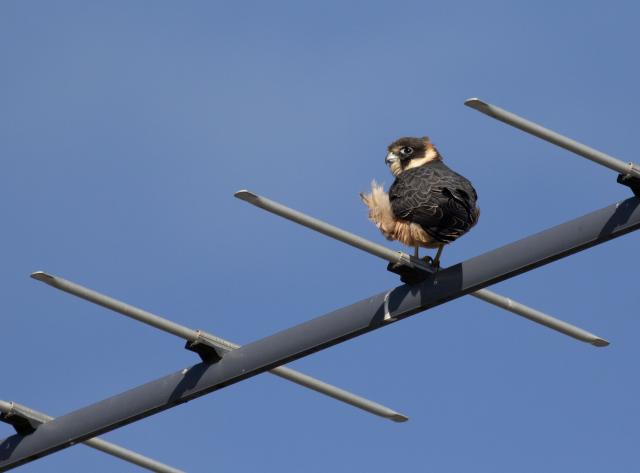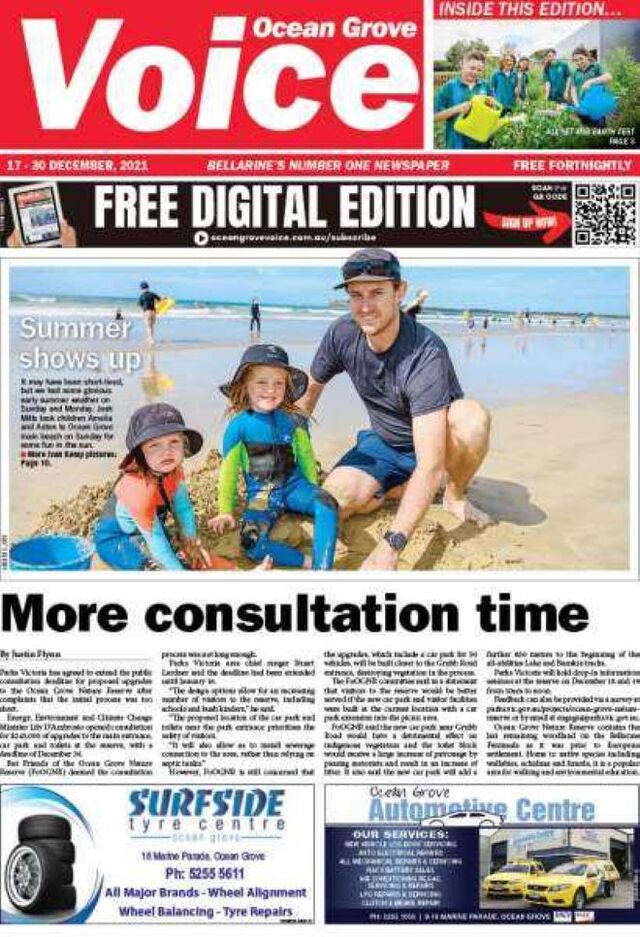I’ve been worried about hatchling birds falling out of nests in the wind, but fortunately I haven’t found any on the ground.
I found two little wattlebird hatchlings in the local park. I don’t know where their nest was, but they were perched on a tree branch and were being very dutifully fed by one of the parents.
I went the next day and couldn’t see or hear the birds so hopefully they flew to a different area, although they were so tiny, they didn’t look capable of it.
A few days later near this area I spotted an Australian hobby, a small raptor of the falcon family, on a rooftop TV aerial.
Hobbies are agile fliers and prey on small birds as well as insects, and while the bird was perched it was being dive bombed by a few brave welcome swallows that I assume had a nest close by.
I spotted four hardhead ducks in the pond on Parkside Boulevard. These ducks may be present throughout the year in many areas but can also be dispersive and nomadic during dry seasons or after very successful breeding seasons.
Another nomadic bird that can be seen in good numbers on the Bellarine currently is the white-necked heron, which moves about the country inhabiting wetlands, and can be found in coastal areas after rain.
There has been a nest of white-faced herons in my local park (also known as Sue’s Park) and the two hatchlings look almost fully feathered and fully grown, so it won’t be long now until they leave the nest.
Karen from Ocean Grove sent me a photo of another bird with strange plumage, which can be identified as a pale Pacific black duck. Sometimes birds other animals can exhibit naturally occurring colour and pigment variations that can make ID difficult, and this can be caused by
albinism, which is a genetic mutation, or leucism which occurs due to a lack of pigment cells present during development, amongst other causes.
I received an email from Carole, who informed me that the amazing migratory shorebirds, known as ruddy turnstones, have returned to St Leonards beach near the pier. Carole has seen a pleasing number of birds this week when she did the Birdlife Australia 20-minute Backyard Bird count.
Carole counted anything up to 14 species in each count but also numbers of individuals were increased as well.
I received an email from Ocean Grove locals Anne and Alan, who have returned from five months away with the caravan. They travelled throughout NSW and Queensland and did 18,000km all up. Alan has thousands of bird photos to sort through.
One of the highlights was volunteering as camp hosts for three weeks at Bowra Wildlife Sanctuary, a 14,000 hectare property owned and managed by the Australian Wildlife Conservancy which is located about 17km north of Cunnamulla.
Each evening, all the campers gathered for ‘bird call’ to tally which of the 219 species listed had seen that day; the highest count was 92. If any readers are passing through south-west Queensland, it’s well worth visiting for a day or more to drive around the property, they said. It is seasonal; details are available on the AWC website.
Alan also had some good luck last week at Coogoorah Reserve, Anglesea. while photographing blue-winged parrots, a Latham’s Snipe wandered across the swamp right in front of him.
Alan had been trying to get a photo of this snipe earlier this year and saw it on no less than three occasions in this same location, but it flew off each time before he could grab a photo.











